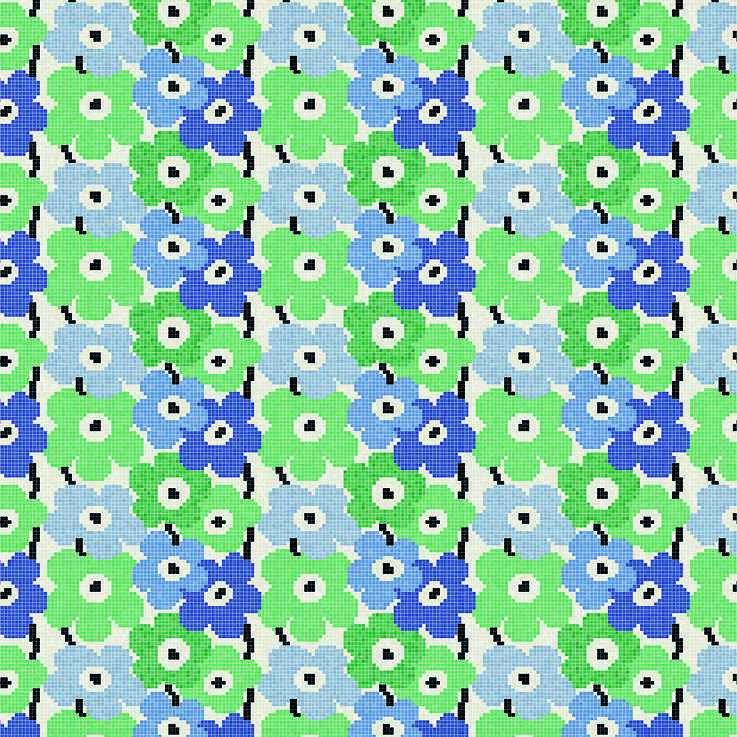Marcello Becchi remembers his days as a child when he’d walk into a toy store with his parents and see things that they couldn’t.
“It was a fantasy,” the Italian-born vice president of business development for the international firm Trend Group says. “I was a fan of Legos – not as blocks, but as a canvas. The toy store was a place where I could paint my own pictures with them.”
His says his position at Trend, an international manufacturer and distributor of mosaic tile collections in recycled glass, enables him to empower architects, interior designers and clients to do the same –with mosaics for high-end residential and commercial use.
Trend buys its glass from recyclers like Strategic Materials, a leading North American recycling company. That firm cleans and crushes the glass that Trend purchases to use in designs for wallpapers, floorcoverings and countertops.
“We want to add as much of it recycled as possible – we can go up as much as seventy percent in some colors,” Marcello said. Trend uses amber glass from beer bottles for its browns, blue glass from vodka and gin bottles for its blues, green from water bottle for its green and clear for other applications. “Nothing is thrown away,” he said. “If the color is off, you can crush it and re-use it in another application or color.”
The firm’s designs are a collaborative effort, with trend spotters relaying new styles from around the world to a team of designers in Italy. There, the designs are assembled into collections, and sent to manufacturing centers in India and Bulgaria. The final patterns are made in Sebring, Fla., Los Angeles and Bulgaria. From there, they’re shipped to showrooms in forty states across the U.S. and around the world.
The glass mosaic pieces come in 300 colors and two sizes: three-quarter inches or five-eighth inches, all one-quarter inch thick. “Interior designers can visit our showroom, review our color palette, and pick and choose the pattern they want,” he said.
The patterns utilize no backing, but a plastic film on their surface instead. Sheets are slightly larger than twelve inches square, so that an installer can open a box of numbered sheets and when finished, display a complete module of a pattern. “One module could be eight, twelve, sixteen, eighteen or twenty-four sheets, and then the module would be repeated,” Marcello said.
Glass mosaic is not much different from working with Legos as a child, he said. “If customers takes the time to design something for themselves, they’ll feel better about themselves. They’ll feel like that kid in the toy store.”


